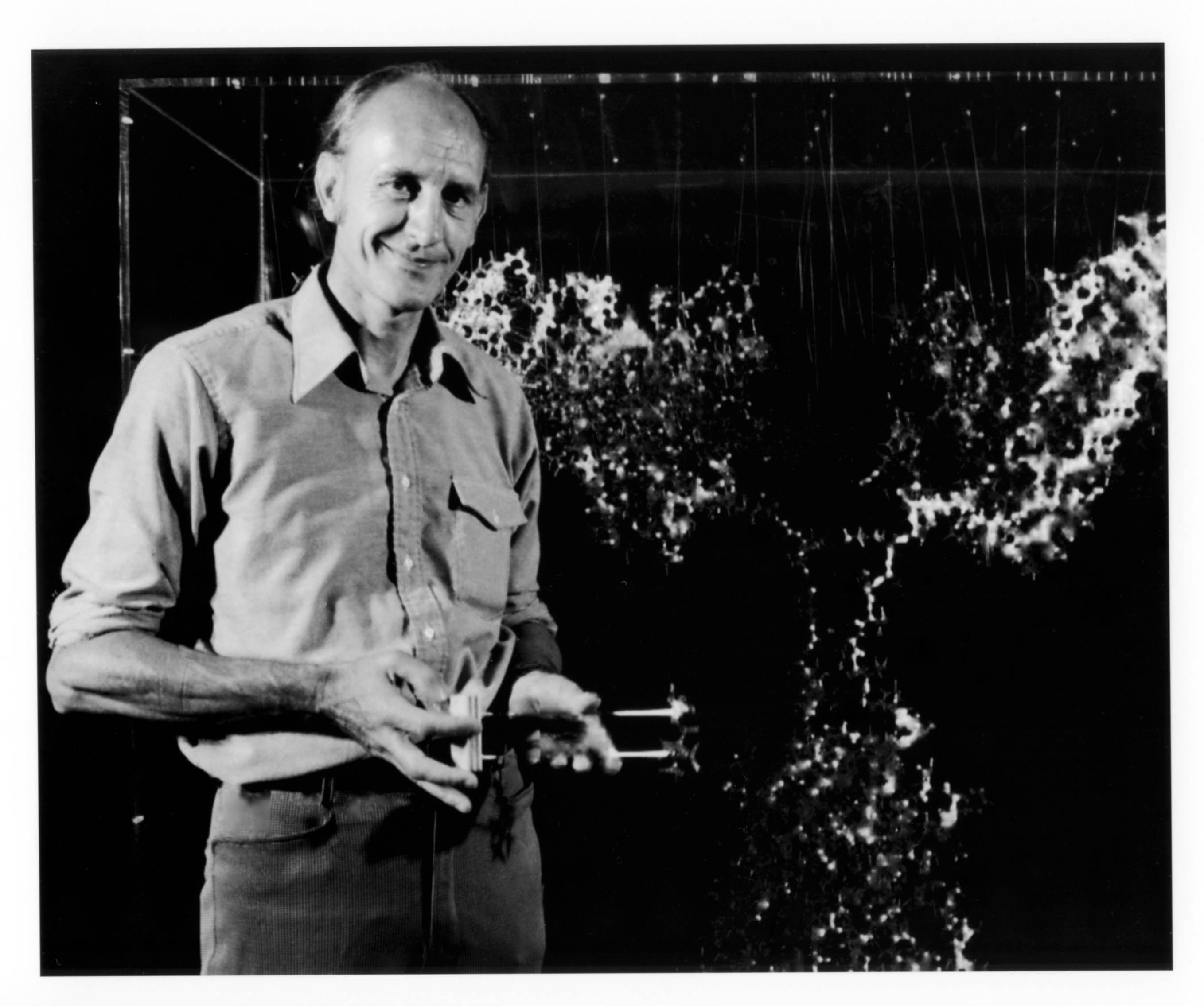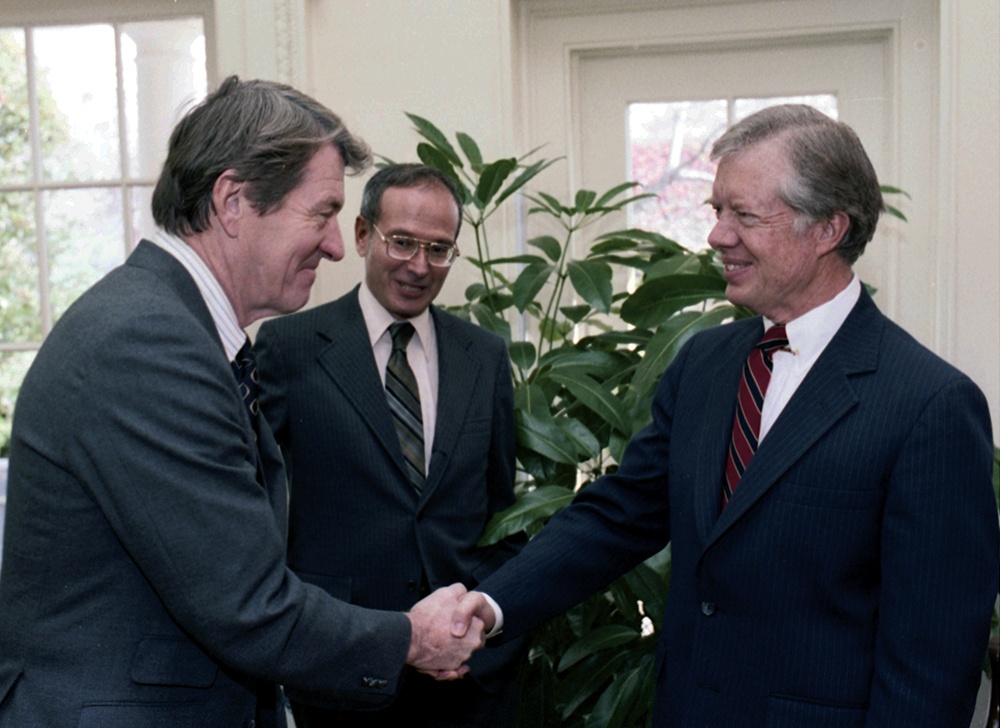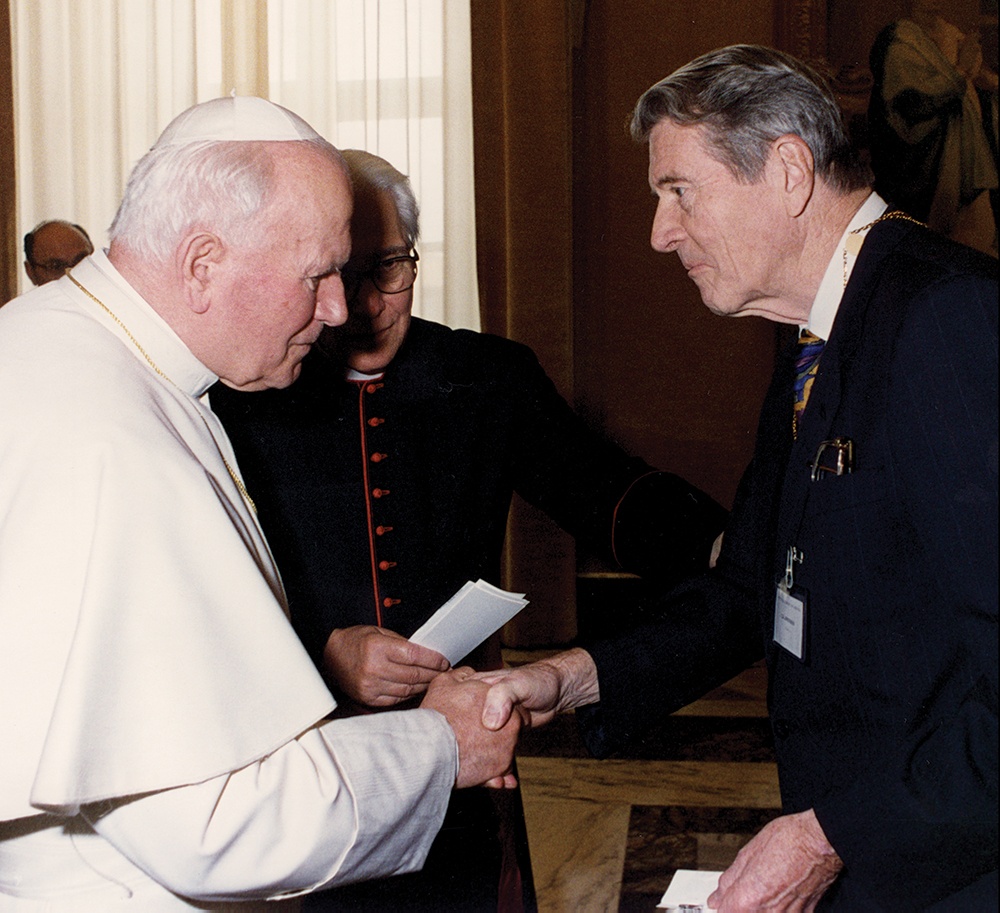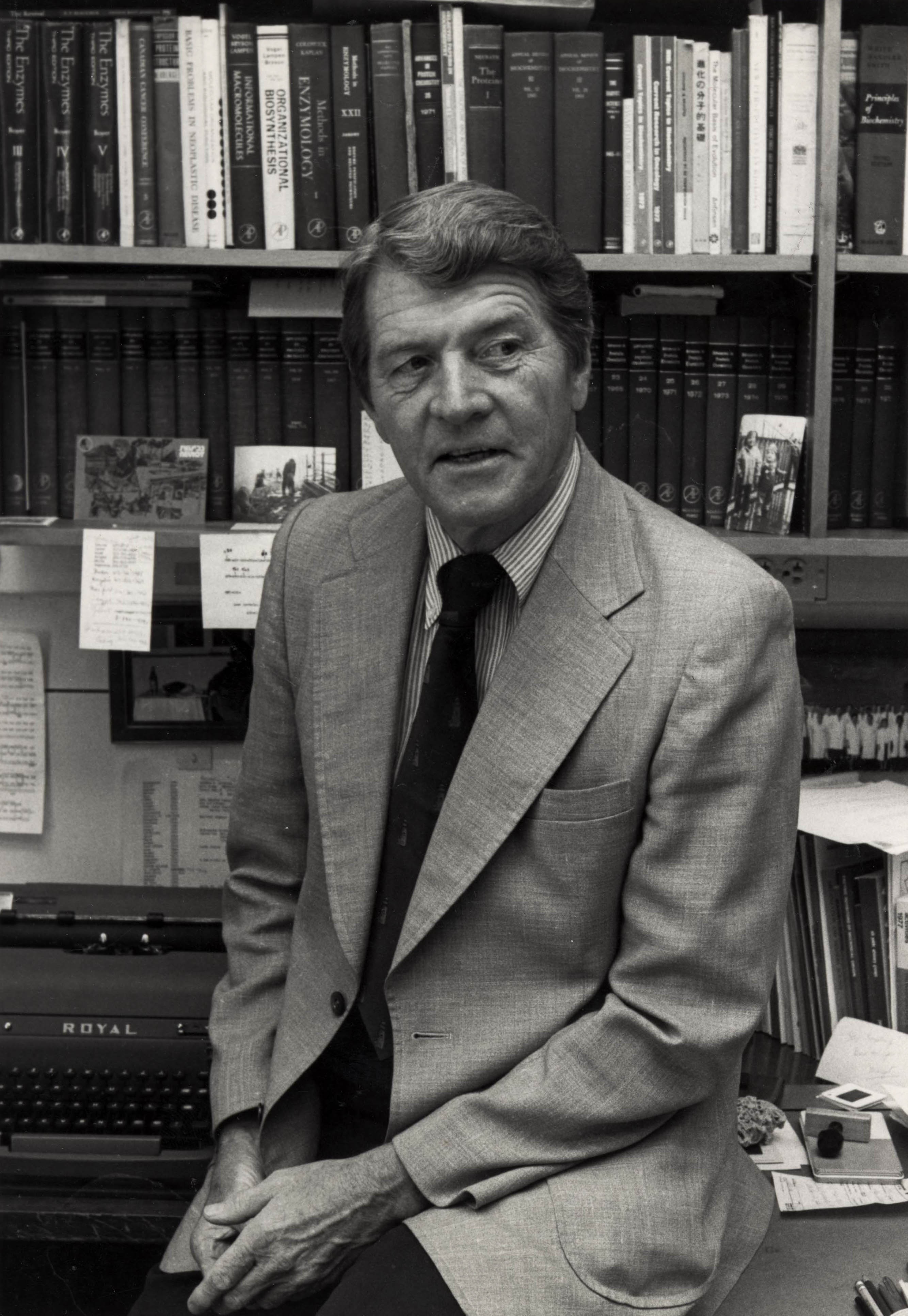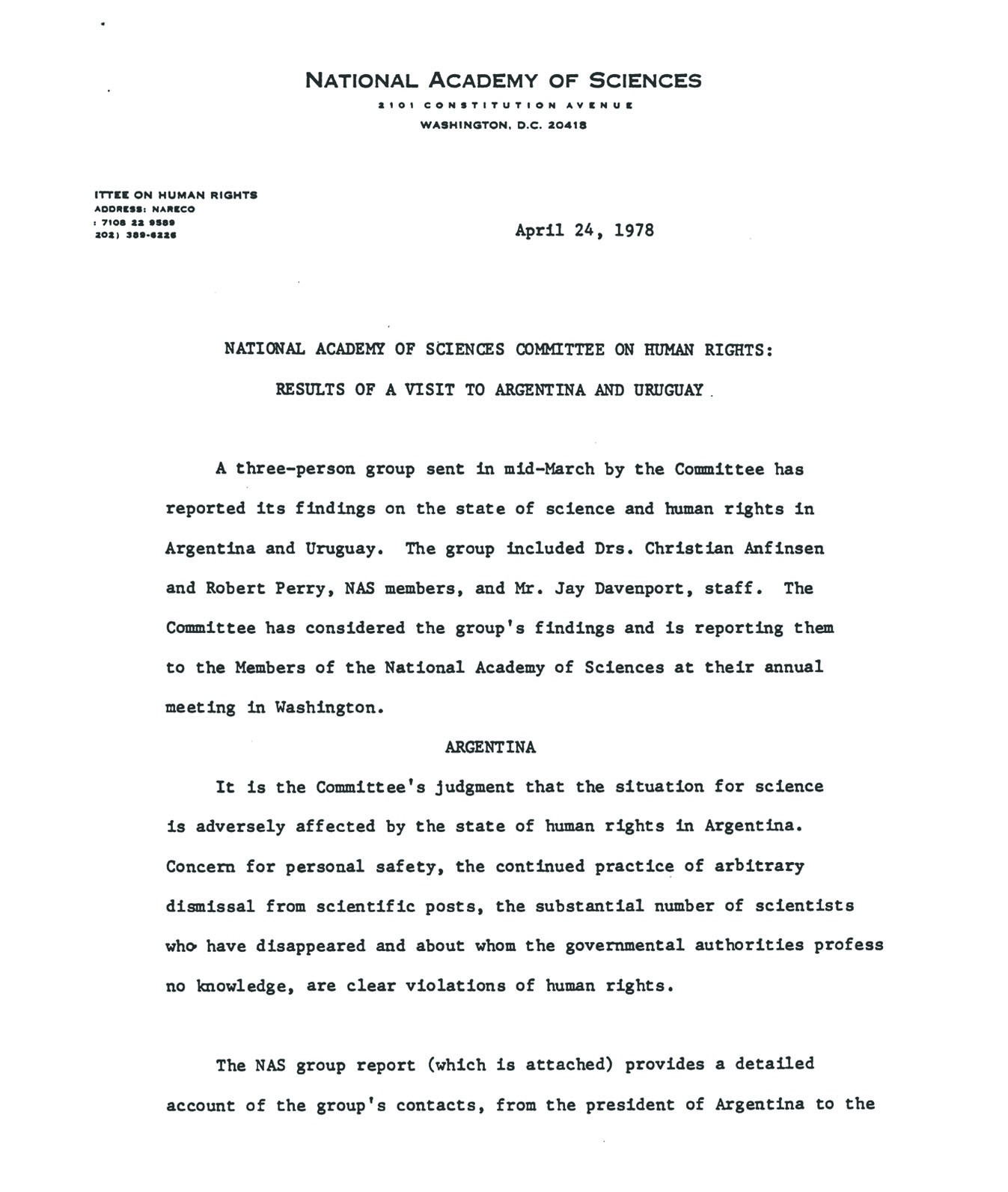The Legacy of a Citizen Scientist
A Scientific Legacy
It didn’t matter what boat we were sailing on with Chris. He was a consummate captain.
- —Ed Rall, NIH Record, May 21, 1996
Christian Anfinsen made a broad impact before his death in May 1995. He had mentored dozens of scientists who went on to their own distinguished careers, such as NIH director Donald Fredrickson. His research touched many fields; for example, he helped bring the concepts and techniques of protein chemistry to the study of antigens and antibodies, which has influenced the development of immunology.
Perhaps sailing is the best metaphor for Anfinsen’s approach to his work and life. Easy-going and optimistic on the water, Anfinsen was also known for his egalitarian treatment of everyone he met as “fellow crew members in the quest to understand nature.”
—Alan Schechter, Structural Biology, 2(8), August 1995National Library of Medicine
In 1957, Anfinsen visited his former colleague Michael Sela at the Weizmann Institute of Science in Israel, forging ties that lasted until the end of his life. Not only did he collaborate on chemistry and immunochemistry projects with Weizmann scientists, he formally converted to Judaism. In 1969, Anfinsen was made an Honorary Fellow of the Institute, and in 1995, a garden was dedicated to his memory.National Library of Medicine
Educating Scientists for the Future
David Davies with a molecular model.ONMH, Stetten Museum of Medical Research
During the 1960s, Anfinsen and David Davies (above) held evening seminars on protein chemistry for NIH Research Associates. For the seminars they built large three- dimensional models of several proteins. The seminars provided training in specialized research methods.
National Library of Medicine
In 1959, Anfinsen was one of 12 founders of the Foundation for Advanced Education in the Sciences (FAES) at the NIH. The FAES seeks to create a collegial environment at the NIH by providing educational and professional services for the scientific community. The FAES has offered hundreds of courses and biotechnology training seminars over the years and has trained more than 16,000 scientists.
A Voice for Scientists
Anfinsen employed his renown as a Nobel Laureate to amplify the voices of scientists and communities whose own voices were diminished, or worse, muted entirely.
In 1978, Anfinsen chaired the Committee on Human Rights of the National Academy of Sciences, which stated, “The plight of those few on whose behalf the Committee speaks and acts, however, is symbolic of that of many others from all walks of life.” (Quote from National Academy of Sciences Committee on Human Rights: Results of a Visit to Argentina and Uruguay, April 1978.)
President Jimmy Carter congratulated Anfinsen at the White House on his Nobel award.Courtesy of the National Archives. Photo by William "Bill" Fitz-Patrick.
Anfinsen thought that scientists were directly responsible for the social repercussions of their work. He was involved in the Partial Test Ban Treaty (1963) and protested the Gulf of Tonkin Resolution (1964) which began the U.S. involvement in the Vietnam War. Anfinsen not only wrote letters and signed petitions to promote human rights, particularly those of scientists, he went to other countries to investigate reports of human rights violations.
Pope John Paul II greeted Anfinsen at the Vatican.National Library of Congress. Photo by Fotografica Felici
Anfinsen's Typewriter Advocacy
Anfinsen sits by his humble Royal typewriter, on which he wrote many letters of support and protest—his scientific and humanitarian missives, as well as his scientific papers.National Library of Medicine
Read the letters that he signed in campaigns to free scientists in the Soviet Union, Turkey, and Brazil, and learn about the stressful trip to Uruguay and Argentina that, unfortunately, caused him to take up smoking again.
Igor Uspensky
Igor Uspensky was a Russian entomologist who wished to emigrate to Israel with his wife Inna and son. Uspensky was the senior research scientist of the Martsinovsky Institute of Medical Parasitology and Tropical Medicine in Moscow from 1961-1982. During this time, the Soviet Union attempted to limit the emigration of Jews. The family’s 1981 application was denied by Soviet authorities on the grounds that Inna’s brother Alexander Ioffe, a mathematician, had access to state secrets. Ioffe was allowed to leave in 1988, however, and the Uspenskys applied for emigration again, which they secured in 1989. Igor Uspensky joined the Hebrew University in Jerusalem.
Click here for a text version of Dr. Anfinsen's letter.National Library of Medicine
Advocacy for Brazilian scientists
\Brazil’s Institution Act No. 5 of December 1968, gave the military dictatorship broad powers to detain, dismiss, or censor anyone who it thought challenged its legitimacy, including scientists like Isaias Raw, Alberto Carvalho da Silva, and Hélio Lourenço de Oliveira. Raw directed the Brazilian Foundation for the Development of Science Teaching and established the Carlos Chagas Foundation. Carvalho da Silva researched animal nutrition as a professor at the University of São Paulo (USP) and Lourenço de Oliveira served as a Dean at USP. All of them were able to leave Brazil to, respectively, Israel, the U.S., and Egypt, but they all returned to Brazil eventually, making further significant contributions to medical science and education in their own country.
Click here for a text version of Dr. Anfinsen's letter.National Library of Medicine
Nihat Sargın
Nihat Sargın was a surgeon turned political activist in Turkey. He became the secretary general of the Turkish Workers’ Party in 1975. After a military coup in 1980, the Turkish constitutional court banned the party, and Sargın left Turkey for exile in Brussels. When he returned to Turkey in November 1987, he was promptly arrested. After three years in prison with no trial and 31 rejected applications for his release, Sargın undertook a hunger strike. He was released after his 19th day on strike in April 1990. He remained in Turkey until his death in 2010.
Click here for a text version of Dr. Anfinsen's letter.National Library of Medicine
Advocating for human rights in Argentina and Uruguay
In March 1978, Anfinsen, Robert Perry, and Jay Davenport made a trip to Argentina and Uruguay as representatives of the Committee on Human Rights of the National Academy of Sciences. While they participated in scientific conferences, believing in the free flow of knowledge, they also met with government officials from both countries about scientists being held in prison or becoming “the disappeared”—those in Argentina who were taken by government forces and never returned.
Click here for a text version of Dr. Anfinsen's letter.




